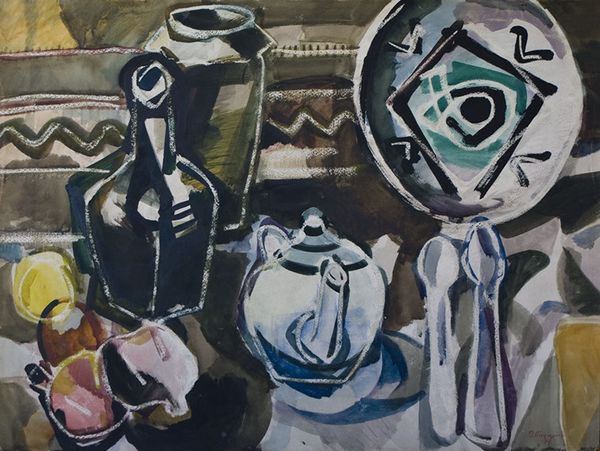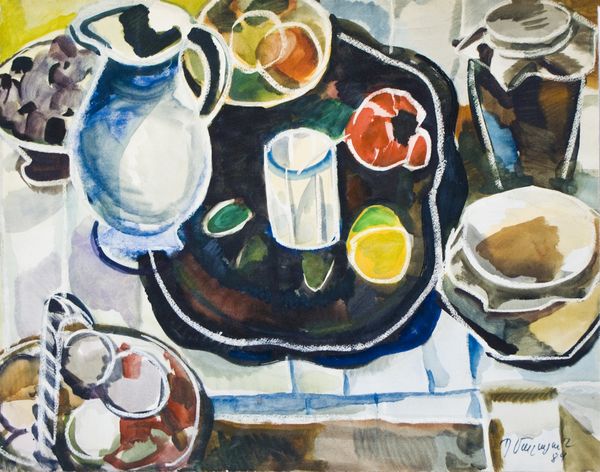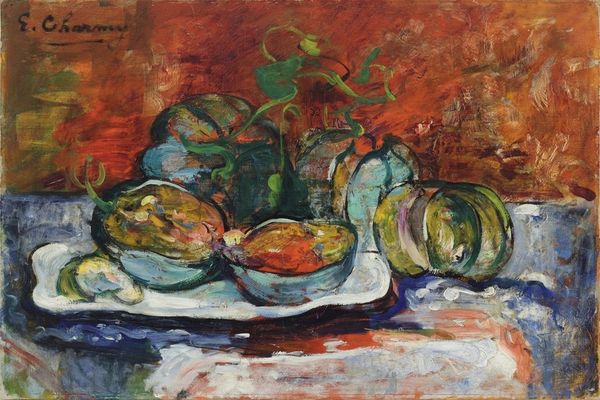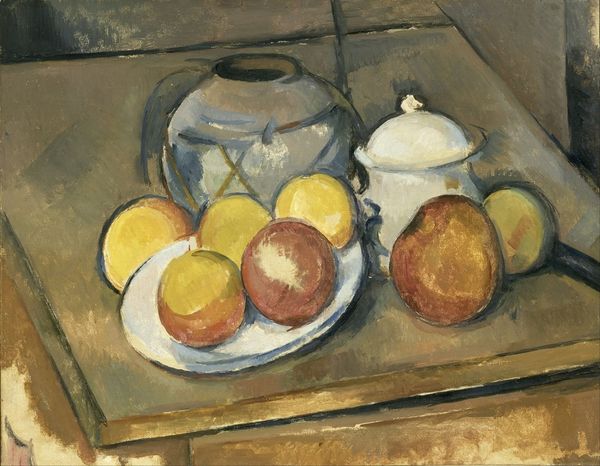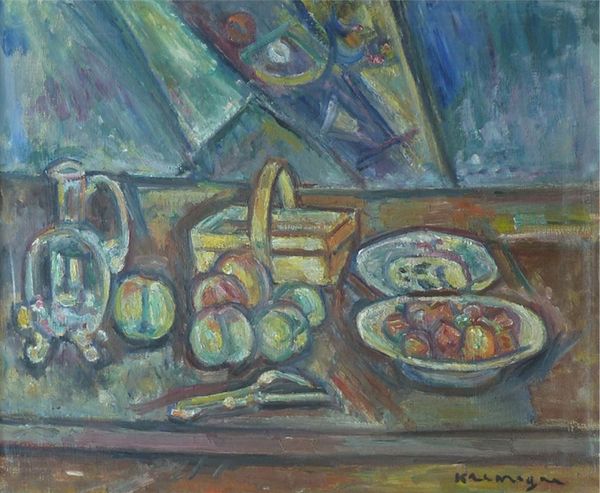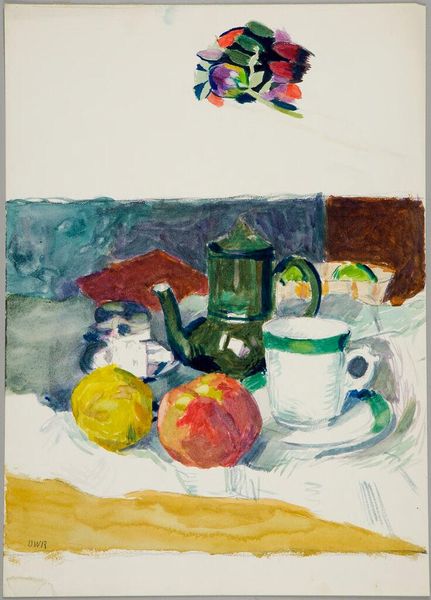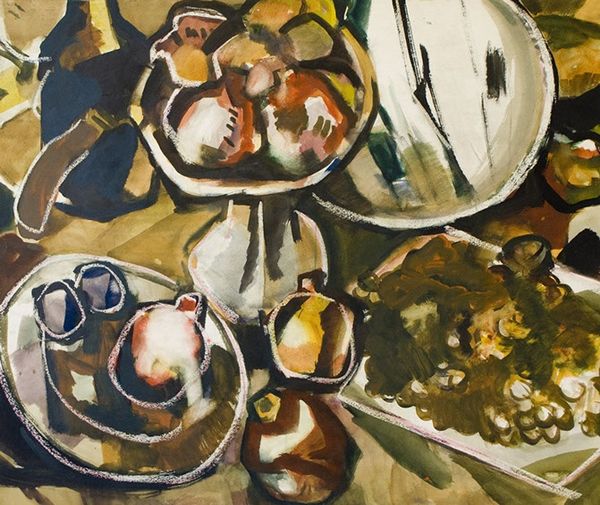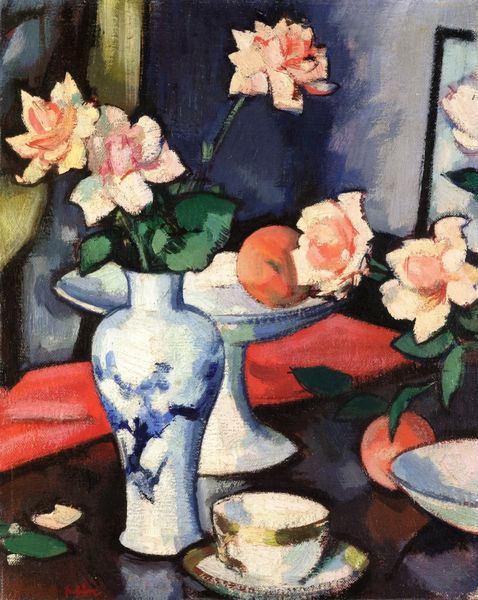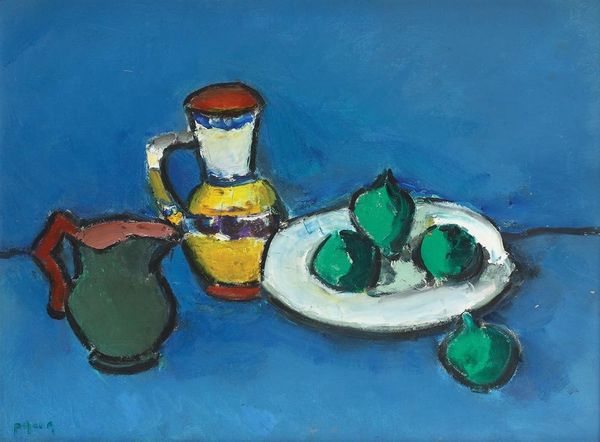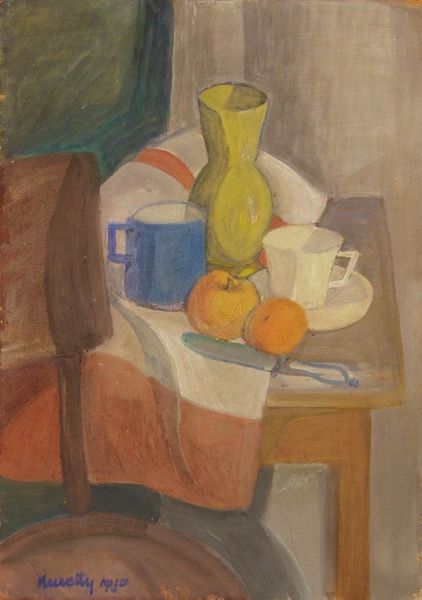
Copyright: Petros Malayan,Fair Use
Curator: Petros Malayan, born in Armenia, created "Still Life with Fruits" in 1978. It is rendered with watercolor on paper. What is your immediate reaction to this piece? Editor: A domestic tableau with a touch of wistful serenity, if that makes sense. There’s a quietness in the colors and the slightly obscured forms, hinting at everyday rituals. It almost feels like memory taking shape. Curator: Yes, I agree. The loose application of color washes invites a conversation about tradition. Still life, particularly fruit, holds complex socio-economic connotations tied to consumption and colonial exchange. Given the Armenian artist, I find myself wondering if this is in conversation with Western painting. Editor: Perhaps, or it's engaging in something more timeless. Think of the fruit, the vessels—they are universal symbols. The plum, the pitcher...aren’t these elemental images of hospitality and bounty? Curator: Absolutely. But I wonder if there’s a conscious engagement with the fraught histories surrounding Armenian identity and displacement in the Soviet Era. Was this artistic style permissible at the time? Editor: It appears he’s drawing from Post-Impressionism and early Modernism. The flattened perspective feels informed by Cézanne. But perhaps the emotional resonance speaks to something deeper. Consider, for instance, the objects themselves: humble fruits alongside a seemingly European tea service. Could that pose quiet tension? Curator: Yes! And, I do notice the very visible signature in the lower corner. Was he allowed artistic visibility? Did he identify as Armenian first and foremost? I am curious to learn more. Editor: Visual symbols hold layers of time. Malayan used everyday objects, things we intrinsically understand. They speak across languages and experiences and allow us to connect with him. I see beauty in how accessible it remains. Curator: Agreed. This watercolor encourages a broader, more humane dialogue. Despite its subtle elements, the simple still life genre becomes a profound vehicle to express identity, and perhaps resistance, against a broader cultural-political context. Editor: Absolutely, now I look forward to researching his visual language within that scope even more. Thank you! Curator: And thank you! It’s inspiring to witness these fruits carry such complex narratives.
Comments
No comments
Be the first to comment and join the conversation on the ultimate creative platform.
